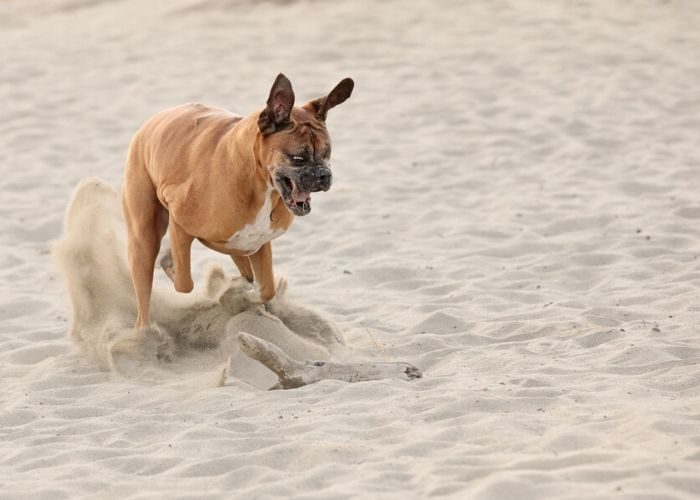Understanding Dog Elbow Dysplasia in A Layman’s Language

Adopted a pet dog recently? While bringing up a pup is fascinating, there are certain health conditions that you must be aware of as a dog owner. Elbow dysplasia is one such physical ailment that impacts the dog’s skeleton. It could be disheartening to see your four-legged friend suffer from this condition, but the positive thing is that as real as it may be, it is treatable. It’s essential to understand and recognize it so that you can help your pet bounce back on his paws at the earliest.
What is meant by Elbow Dysplasia?
If you spot your pooch showing signs of lameness, its time you take a close look at him. As the name suggests, this condition affects the elbow of the canine and can grow as the dog matures. The reason why you need to get it treated early is obvious. Yes, because it can aggravate as your pup grows older and lead to malformation and degeneration of his forelimb joints. It is a painful condition and commonly noticeable in the larger breed of dogs such as the Golden Retrievers, Labradors, German Shepherds, Chow Chows, Bearded Collies, Rottweilers, and Newfoundland and other giant breeds.
Know the symptoms
Knowing the symptoms can aid in offering your dog the appropriate treatment at the right time. Things to look out for would be decrease movement of the joint, discomfort expressed by your puppy in flexing the joint, etc. If your pup has an elbow dysplasia, he might limp or display stiffness when trying to get up from a resting position. In severe cases, this condition can progress and end up in fluid buildup in the joints. This can cause grating of the bone as the cartilage keeps wearing with time.
How to identify whether your dog has elbow dysplasia?
Being watchful of the signs can help! Your dog will show signs of pain when flexing his joint, display lameness that can get worse with exercise or long periods of resting. At times, the swollen joints could be visible and your pup might be unwilling to go for a walk or even play owing to the pain. If you happen to observe any such symptoms, it would be mindful to take him to the doctor.
What causes dog elbow dysplasia?
Dysplasia of the elbow can occur when a growth plate doesn’t close properly. This can lead to a joint irritation caused by a displaced bone piece. Sometimes, a bone can break inside the elbow joint of your puppy and irritate its lining.
Other reasons include loosening of the cartilage from the joint surface or a naturally defective structure of the joint. Learn more about the diagnosis of elbow dysplasia at https://www.thesprucepets.com/elbow-dysplasia-in-dogs-4691882.
Treatment options available

Once you take your furry friend to the vet, he should be able to do an in-depth examination of your pet’s elbow to identify the exact cause and suggest the best treatment.
There are myriad treatment options available today and depending on the severity of the condition, the relevant treatment would be recommended by the dog expert. In some cases, surgery might be needed to correct its deformity.
A common surgical practice is to introduce a fiberoptic scope into the joint space of the pup’s elbow. This cleans out the floating cartilage pieces or bone to correct it. Some doctors could suggest an open joint surgery to treat a displaced elbow.
Some activities that involve movement such as swimming could be prescribed as a rehabilitative measure for your doggy to gradually get back to normal. Healthy exercises like an underwater treadmill and other motion exercises can work well. You can consider checking with your Vet for the best advice. Curious to learn more about this abnormal issue, then read this informative content.
Once your dog undergoes surgery, make sure that he receives adequate rest and aftercare. He might have to be confined to a place for a certain period. Most canines benefit from this surgical treatment.
However, in some cases, if arthritis is established, the recovery process could slow down although research indicates that almost 85% of these cases show visible progress in lameness and comfort despite the advancement of arthritis. Dysplasia in dogs cannot be completely cured but treated and well managed to enable dogs to live an active healthier life.
